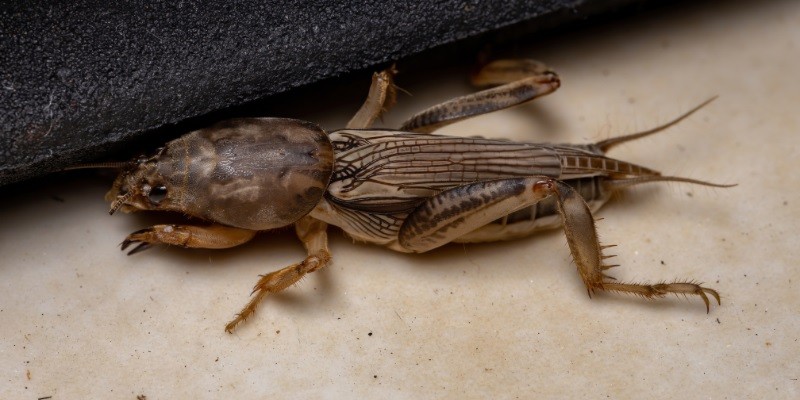Last Updated on November 21, 2023
Most people are familiar with adult crickets, which are easily recognized by their long antennae and legs that enable them to jump great distances. Baby crickets, or nymphs, look very different from their adult counterparts. Nymphs lack wings and have shorter antennae and legs.
Their bodies are also smaller in comparison to adults. Although they may not be as noticeable as adults, nymphs can still be found in a variety of habitats such as gardens, fields, and forests.
If you’re like most people, you probably think of a cricket as a small, dark brown insect with long antennae. But did you know that baby crickets look very different from their adult counterparts? In fact, they are bright yellow and have no wings!
As they grow older, crickets gradually become more brown in color. Their wings also start to develop during this time. By the time they reach adulthood, crickets are fully equipped to make that signature chirping sound that we all know so well.
So next time you see a cricket, take a closer look and see if you can spot any babies! They’re pretty easy to spot once you know what to look for.
Crickets’ Life Circle. Grow, Reproduce, Born, Mature. A Crickets’ life.
What Do Crickets Look Like As Babies?
Crickets, like many insects, go through a process called metamorphosis in which they change form several times as they develop. When they first hatch from their eggs, baby crickets are very small and have only six legs. They look nothing like the adult crickets that most people are familiar with.
Baby crickets also don’t have wings, so they can’t fly. As they grow and mature, they gradually develop wings and start to look more like adults. At each stage of development, baby crickets looks quite different from the ones that came before or after them.
What Bug Looks Like a Tiny Cricket?
There are many different types of insects that can resemble crickets, making it difficult to give a definitive answer to this question. Some of the most common offenders include camel crickets, mole crickets and Jerusalem crickets. All of these insects share some basic similarities with true crickets, such as their long antennae and overall cricket-like body shape.
However, they also have some key differences that help to set them apart. Camel crickets get their name from their humped back appearance and are often found in dark, damp places like basements or cellars. They are relatively harmless creatures that do not bite or sting humans.
Mole crickets are another type of insect that is commonly mistaken for a cricket. These subterranean pests gets their name from their burrowing habits and strong front claws, which they use to dig extensive tunnel systems underground. Like camel cricks, mole cricks do not pose any threat to humans.
The last common type of ‘cricket’ is the Jerusalem cricket (Stenopelmatus fuscus). This large insect gets its name from its native habitat (the Mediterranean region) and its unique appearance. Jerusalem crickets have a globular body with no wings and short legs, which gives them a somewhat comical look.
Despite their harmless appearance, these critters can deliver a painful sting if handled incorrectly.
Why are There So Many Baby Crickets in My House?
If you’ve been hearing the chirping of crickets in your home, there’s a good chance you have an infestation. Crickets are attracted to homes for food and shelter, and once they get inside, they’re hard to get rid of. If you’re wondering why there are so many baby crickets in your house, it’s probably because they’re reproducing.
Crickets lay their eggs in the cracks and crevices of homes, and the eggs hatch about two weeks later. The nymphs ( juvenile crickets) that emerge look like adults, but they’re smaller and don’t have fully developed wings. They’ll molt several times as they grow over the next few months before reaching adulthood.
During this time, baby crickets will feed on just about anything – including clothes, carpets, book bindings, furniture and even each other! This can cause damage to your property and be a nuisance. If you have a cricket infestation in your home, call a pest control professional to get rid of them quickly.
Where Do Crickets Lay Their Eggs?
Female crickets lay their eggs in the soil, using their long ovipositors to deposit them in small crevices. Once they have found a suitable spot, they will lay around 20 eggs at a time and then cover them with a layer of soil to protect them. The eggs will hatch after around two weeks, depending on the temperature.

Credit: pestcontrolzone.com
Do Baby Crickets Look Like Worms?
Crickets and worms are both common insects that can be found in many homes. While they may look similar, there are some key differences between these two creatures. For one, crickets are generally much larger than worms.
Additionally, crickets have six legs while worms have none. Finally, cricket bodies tend to be more slender and streamlined than worm bodies, which are typically thicker and more segmented. While baby crickets may resemble worms at first glance, upon closer inspection it is easy to see the distinctions between these two creatures.
If you find an insect in your home that you believe to be a cricket, take a closer look to be sure. And if you’re ever unsure about what kind of insect you’ve found, it’s always best to consult with a professional!
Conclusion
Baby crickets are small and delicate creatures. They are born without any legs or wings and must undergo a process of molting in order to grow them. This usually happens around 4-5 times before they reach adulthood.
The newly hatched cricket is white or pale yellow in color and looks very different from the adult cricket, which is dark brown or black.

